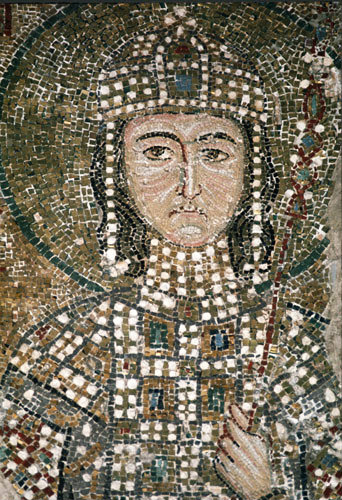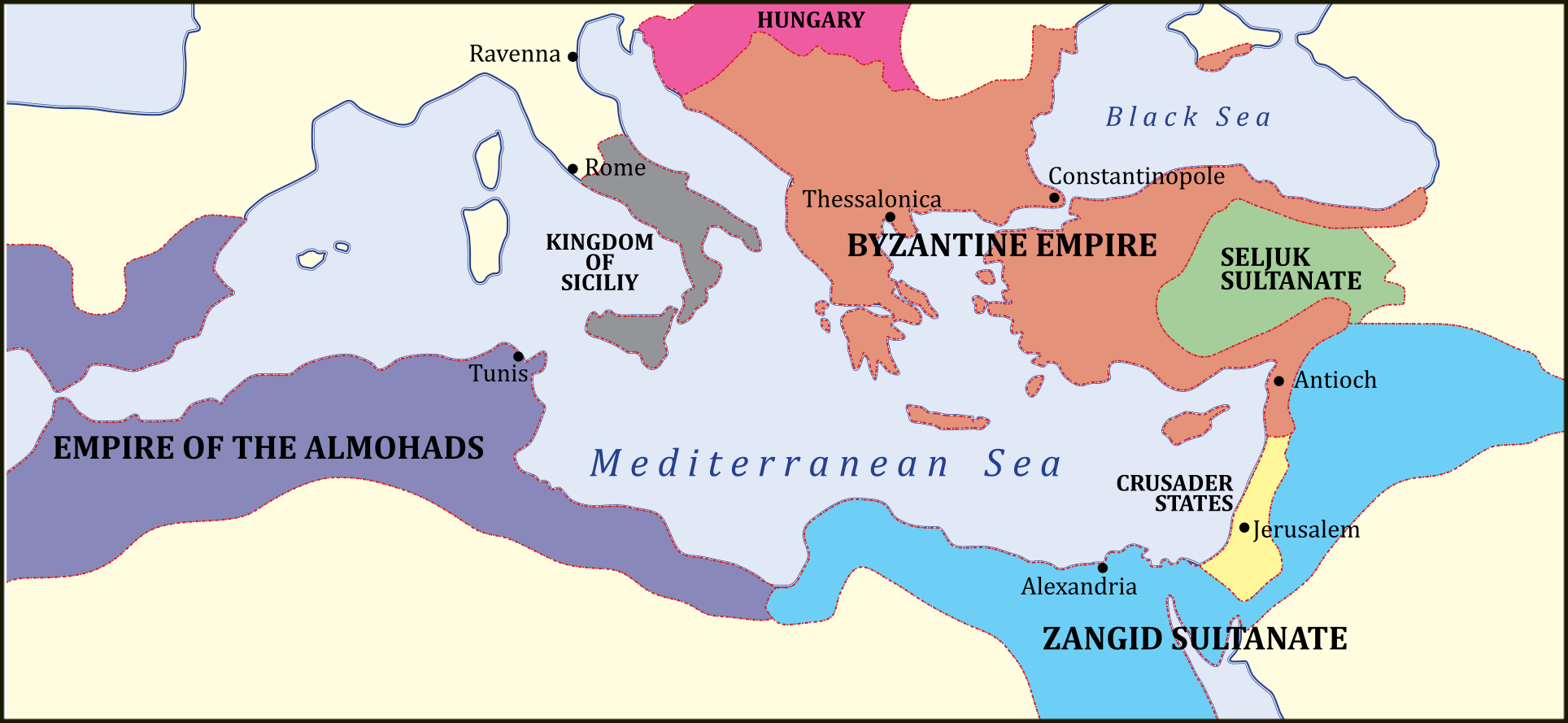|
|

From “The Alexiad” (Book XII) by Anna Komnene. (LINK) |
Alexios I Komnenos
Alexios I Komnenos (1048-1118) (1081-1118) (W)
.jpg)
Portrait of Emperor Alexios I, from a Greek manuscript. |
| Alexios I Komnenos (Greek: Ἀλέξιος Κομνηνός, c. 1048 – 15 August 1118), Latinized Alexius I Comnenus, was Byzantine emperor from 1081 to 1118. Although he was not the founder of the Komnenian dynasty, it was during his reign that the Komnenos family came to full power. Inheriting a collapsing empire and faced with constant warfare during his reign against both the Seljuq Turks in Asia Minor and the Normans in the western Balkans, Alexios was able to curb the Byzantine decline and begin the military, financial, and territorial recovery known as the Komnenian restoration. The basis for this recovery were various reforms initiated by Alexios. His appeals to Western Europe for help against the Turks were also the catalyst that likely contributed to the convoking of the Crusades. |
|
|
|
Comnenus family

Emperor Alexius Comnenus detail of the mosaic in the south gallery Hagia Sophia 11th century. |
Comnenus family, Comnenus also pelled Komnenos, Byzantine family from Paphlagonia, members of which occupied the throne of Constantinople for more than a century (1081-1185).
Manuel Eroticus Comnenus was the first member of the family to figure in Byzantine history; an able general, he served the emperor Basil II in the East. His son, Isaac I, leader of the military nobles and soldiery of Asia Minor, reigned as emperor from 1057 to 1059. Isaac’s nephew, Emperor Alexius I (1081-1118), founder of the Comnenian dynasty, was succeeded by his son John II (1118-43). John II was followed by Alexius I’s grandson Manuel I (1143–80) and great-grandson Alexius II (1180–83). With the death of Alexius II, the elder line of the family died out. Andronicus I (1183–85), son of John II’s brother Isaac, succeeded Alexius II and was the last Comnenian emperor. The family continued to play an important part in state affairs, however, and was allied by marriage to other ruling families, such as the Angeli and the despots of Epirus. Following the Latin conquest of Constantinople in 1204, Andronicus I’s grandsons Alexius and David, with Georgian help, founded the empire of Trebizond, which lasted until 1461, when David Comnenus, its last ruler, was deposed. He was executed some time later by the Ottoman sultan Mehmed II. |

Hagia Sophia, Istanbul. The Comnenus Mosaic. Virgin Mary With Jesus, Emperor John II Comnenus And Empress Irene. |
|
|
Anna Komnene
Anna Komnene (1083-1153) (W)
Anna Komnene (Greek: Ἄννα Κομνηνή, Ánna Komnēn;ḗ 1 December 1083-1153), commonly latinized as Anna Comnena, was a Byzantine princess, scholar, physician, hospital administrator, and historian. She was the daughter of the Byzantine Emperor Alexios I Komnenos and his wife Irene Doukaina. She is best known for her attempt to usurp her brother, John II Komnenos, and for her work The Alexiad, an account of her father's reign.
At birth, Anna was betrothed to Constantine Doukas, and she grew up in his mother's household. She was well-educated in “Greek literature and history, philosophy, theology, mathematics, and medicine.”
Anna and Constantine were next in the line to throne until Anna's younger brother, John II Komnenos, became the heir in 1092. Constantine died around 1094, and Anna married Nikephoros Bryennios in 1097. The two had several children before Nikephoros' death around 1136.
Following her father’s death in 1118, Anna and her mother attempted to usurp John II Komnenos. Her husband refused to cooperate with them, and the usurpation failed. As a result, John exiled Anna to the Kecharitomene monastery, where she spent the rest of her life. |
Historian and intellectual
In the seclusion of the monastery, Anna dedicated her time to studying philosophy and history. She held esteemed intellectual gatherings, including those dedicated to Aristotelian studies. Anna's intellectual genius and breadth of knowledge is evident in her few works. Among other things, she was conversant with philosophy, literature, grammar, theology, astronomy, and medicine. It can be assumed because of minor errors that she may have quoted Homer and the Bible from memory when writing her most celebrated work, the Alexiad. Her contemporaries, like the metropolitan Bishop of Ephesus, Georgios Tornikes, regarded Anna as a person who had reached “the highest summit of wisdom, both secular and divine.” |
|
|

Roman Empire (in orange) c. 1180, at the end of the Komnenian period. |
|
|
|
|
|
|

